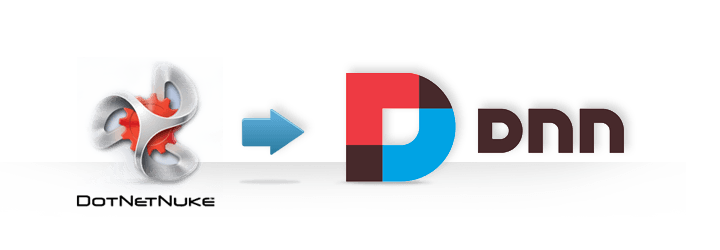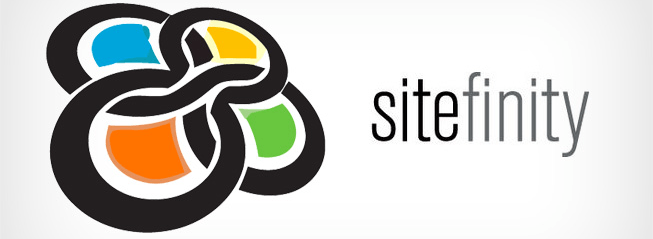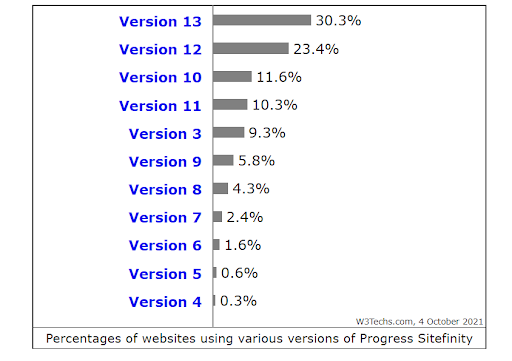Did you know?ASP.NET is the most popular server-side programming language used on websites, accounting for around 8% of all sites that use it as their source code!
In fact, ASP.NET is the technology behind many popular businesses and personal websites, such as eBay, PayPal, Travelocity, Bank of America, and The Home Depot. Its popularity has been growing over the years, and so have the number of Microsoft ASP.NET CMS available in the market.
Besides, the new version 4 of ASP.NET is used by over 90% of all websites that use this technology as per the w3techs’s recent update 2021.
Image Source: w3techs
So, which is the best?
It’s a tough choice!
In today’s tech-savvy world of web designing, there are many ASP .NET CMS available on the market, which can confuse someone to choose among them wisely.
You need to consider many parameters like the CMS’s features, functionality, security, and stability. It can be a daunting task to choose among them! But don’t worry; we’re here to help you find what your business needs that will be perfect and give you a professional voice.
Moreover, this is only to help you make a better decision and choose the best one among the top 4 Microsoft ASP.NET CMS available in the market.
So let’s start!
Unlock success with the ultimate ASP.NET CMS guide. Compare, choose, and elevate your web experience!
Table of Contents
Comparison for the Top 4 Microsoft ASP.NET CMS- Complete Overview!
First of all, even before you decide which ASP.NET CMS to use, you have to determine if you need a CMS in the first place? You should have good enough reasons to use a content management system for developing your new site, and planning everything from scratch is always a good idea. You can easily find out if you need a content management system by answering the following simple questions:
– Is this site a blog, gallery, news site, or eCommerce store?
– Do you need to update the site content on the site regularly?
– Can multiple users update the website simultaneously?
– Do you need control over the content publishing for the website?
– Are the users of the content management system non-technical people with basic computer knowledge?
– Do you need the site to be SEO and Social Media friendly from the start?
.Net CMS
Get well-balanced, experienced and scalable hand-picked dedicated software development teams from PixelCrayons.
The more positive answers you have to the above questions, the more clearly you need a content management system to develop your website. But the question still stays- which CMS platform do you choose?
Deciding which CMS to use (Points to Analyse before choosing the right CMS) depends on the type of website you want to create, development platform (.NET or PHP) you are comfortable with and if you want a paid or open-source solution. Let’s see which CMS is popular among people. Here is the usage of ASP.NET CMS for websites:
This diagram shows the percentages of websites using various ASP.NET content management systems.
You can read this diagram as DotNetNuke is used by 0.2% of all the websites, a content management system market share of 0.6%.
Although there are many good CMSs out there worth a look at, we have curated a list of top. NET-based CMS, i.e., that you can use to create your website or web application. There are many options to determine which ASP.NET development CMS framework suits you best for your current project.
Want to hire Blockchain Developers at 60% less cost?
1. DotNetNuke (DNN)
DNN, formerly known as DotNetNuke, is an open, extensible, secure, and scalable content management system powering over 800,000 websites worldwide. DNN is one of the most well-known and popular open-source CMS based on Microsoft .NET.
The DNN Platform can be used as a content management system as well as an application development framework. It can be used to quickly create and deploy rich, modular, and highly interactive websites and web applications; that’s why DNN CMS development is widely preferred by SMEs and enterprises alike.
The diagram below shows the market position of DotNetNuke in terms of popularity and traffic compared to other content management systems.
Image Source: w3techs
Some Well-Known Sites Using DotNetNuke
- Mrud.ir
- Gs1us.org
- Tehran.ir
- Mouser.com
- Navy.mil
- Bni.co.id
- Af.mil
- Mouser.cn
- Taag.com
- Viettelpost.vn
Notable Points: Stable and Mature, Ease of Install, Strong Community, Lots of options for themes and plugins.
Licenses: Free (Community Edition) & Subscription-based (Professional and Enterprise Editions)
Key Features of DotNetNuke:
- Security and scalability: DNN’s architecture ensures that it can scale to meet modern Web development needs, even in enormous enterprises. The data and content can be securely and reliably accessed from wherever they need to be, including locations that may not have a high-speed bandwidth connection to the internet.
- Open source: DNN is licensed under an MIT/X11 open source license. This allows you to use the code on your website for free without paying licensing or royalties fees. However, it does not allow you to create a product with the same features.
- Easy to install: DNN is easy to download and install using the Microsoft Web Platform Installer – it’s a few simple clicks! Once installed, you are ready to begin creating your website or application straight away. No complicated set up required!
- Extensible framework: DNN allows developers to extend its capabilities by writing their modules/plugins. It also allows developers to customize themes and skins.
- Community-driven: DNN is developed, maintained, and supported by an active community of over 55,000 members who participate in the forums daily. So, without thinking much, you can always get help when you need it!
2. Kentico
Kentico CMS is an enterprise Web Content Management System and Customer Experience Management System that provides a complete set of features for building websites, intranets, community sites, and e-commerce solutions on the Microsoft ASP.NET platform on-premise or in the cloud.
It supports mobile websites, marketing automation, SEO, document management, online marketing tools, multilingual websites, translation management, and multisite management. It ships with 70 modules, 400 configurable Web parts, and source code available.
Kentico CMS is a highly configurable platform that can easily modify and extend to fit your client’s needs. Updating your website with Kentico CMS is intuitive. All pages are organized in a tree hierarchy that reflects the site navigation, so you can easily find the page you want to edit. Kentico can easily handle small to enterprise-level websites.
Kentico’s version 12 is the most used theme on 27.2% of all websites that use it, with over 11 Megabytes worth!
Some well-known sites using Kentico
- Pearsonvue.com
- Aruba.it
- Pbebank.com
- Ingrammicro.com
- Ril.com
- Confirmit.com
- Hyundai.de
- Accessbankplc.com
- Macu.com
Notable Points: Stable and Mature, Ease of Install, Highly Flexible and Scalable, Strong Community, 400+ built-in web parts, Options for plugins.
Licenses: Free (Need link and logo on your website) and Paid ($3,499 – $59,999)
Key Features of Kentico:
- Strong Community: Kentico is one of the most popular CMS solutions on the market, with a large community.
- Highly Flexible and Scalable: It can create various websites – from a small business site to a complex enterprise web platform.
- Solid Security: The product features security-hardening out of the box, with additional options to choose from.
- Stable and Mature: It has a high compatibility level and stable core, which Kentico’s team monitors daily.
- Strong eCommerce capabilities: Kentico provides an integrated shopping cart solution that features complex product catalogs, offers personalization, highly configurable email templates, support for multiple currencies and languages, built-in option to build reports on your data.
3. Umbraco
Umbraco is a fully-featured open source content management system with the flexibility to run anything from small campaign or brochure sites right through to complex applications for Fortune 500’s and some of the largest media sites in the world. Umbraco is easy to learn and use, making it perfect for web designers, developers, and content creators alike.
Umbraco development service is in high demand these days because Umbraco is easy to use, simple to customize, and robust enough to run the most significant sites such as wired.co.uk and asp.net. Umbraco’s modern UI, pure .NET architecture, and active community make it the best choice for web CMS. Umbraco supports both MVC and WebForms. One thing that goes against it is the extra effort to get started because it is designed with developers in mind.
The newest version of Umbraco, version 4, is used by a whopping 97.6% of all websites that use the CMS!
Image Source: w3techs
Some well-known sites using Umbraco.
- Forzaleasing.dk
- Nios.ac.in
- Akmerkez.hoopsdigital.com
- Gympartner.nu
Notable Points: Open Source, Open API, Stable and Mature, Ease of Install, Highly Flexible and Scalable, Strong Community, Options for plugins.
Licenses: Free (Open Source) with options for paid support and add-ons.
Key Features of Umbraco:
- Open Source: Umbraco CMS is an open-source Content Management System software. This means that it can be installed, configured, and maintained free of charge.
- Open API: Umbraco has a well-documented open API that allows you to extend functionality.
- Stable and Mature: Umbraco is a mature solution for your content management needs, including an easy-to-use backend UI.
- Ease of Install: It includes advanced features such as real-time workflow, document management system, REST API built on the .NET platform.
- Highly Flexible and Scalable: Umbraco is a good solution for growing sites as it supports unlimited content types, media files, languages, and websites with the option to share data between them.
4. Sitefinity
Sitefinity CMS is the next-generation web content management system for creating compelling websites, intranets, portals, and blogs. It offers many enterprise features and simple, easy-to-use online administration for managing your website. The new revolutionary User Interface is very task-oriented and simplifies the user interaction with the system.
The Sitefinity CMS has been developed by Telerik, a team responsible for some great solutions such as RadControls. Sitefinity uses .net standards such as MasterPages and Controls for template management, all of which make setting up the site’s front end straightforward. Sitefinity CMS development companies are on the rise these days to cater to the high demands of this platform. In version 13, 30.3% of all websites are utilizing Progress Sitefinity!
Image Source: w3techs
Some well-known sites using Sitefinity
- Apartments.com
- Nyc.gov
- Aramex.com
- Axisbank.com
- Fxstreet.com
- Telerik.com
- Everydayhealth.com
- Nus.edu.sg
- Bnc.com.ve
Notable Points: Easy to Install and use, Supports Responsive Design and Mobile Website Development, Documentation, and Support.
Licenses: Paid (Starting at $2,999 for Standard edition)
Key Features of Sitefinity:
- Easy to Install and use: Sitefinity CMS is a simple CMS that provides you with all the resources & modern tools needed to build a website from scratch.
- Supports Responsive Design and Mobile Website Development: Solution for better UX through responsive design
- Documentation and Support: Sitefinity has extensive in-built documentation, which supports offline search. Also, they have a dedicated team for support.
Do You Want to Hire a Mobile App Developer?
DotNetNuke (DNN) Vs Kentico Vs Umbraco Vs Sitefinity
Wrapping Up!
CMS has made the life of web developers as well as users relatively easy. Still, these tools should be used with care and planning, as selecting the right technologies and tools at the start of the project makes the process easier.
Using the content management system to develop the site or web application can provide lots of extra benefits like:
— Tons of third-party plugins, themes, and extensions
— Community-based support
— Low-cost development using open-source CMS
— Easy to set up and run
— Better security
— Flexibility and Scalability
If you have any queries related to CMS website development, you can contact PixelCrayons. Our professionals always assist you in choosing the right platform.
Navigate the ASP.NET CMS landscape effortlessly. Discover, compare, and make the right choice for success!
FAQs
Q1. Is ASP.NET a CMS?
Ans: No. ASP.NET is a web development framework that can build dynamic websites, web applications, and services – but it is not a Content Management System. However, there are a variety of ASP.NET-based CMS solutions like Umbraco, Sitefinity, and DotNetNuke available from Microsoft and other vendors and several open-source projects. ASP.NET MVC also has a rich extensibility model that enables developers to build their own CMS-like solutions too.
Q2. What is CMS in ASP.NET C#?
Ans: CMS in ASP.NET is a framework that defines a model for building Websites and Web applications with a CMS.
A CMS in ASP.NET comprises many features geared towards making website creation easier for users who do not have the time, technical skills, or expertise to create their own site from scratch. A CMS can reduce the time it takes to develop a site by as much as 75%. Moreover, there are three main components of a CMS:
- A database engine for content management
- Templates and editors for managing page layouts, graphics, and styles
- A user interface to perform administrative tasks; CMSs are flexible in what they can do.
Q3. Is Umbraco open source?
Ans: Yes. Umbraco is an open-source CMS written in C# and distributed under GNU General Public License (GPL). It’s free to use, learn and develop, and you can use it on everything from hobby sites to commercial sites.
Umbraco is also an open community of developers, writers, testers, and end-users. We are one big family. Everyone is welcome to join!
Q4. Who uses Umbraco?
Ans: Umbraco is used by many customers worldwide, including Activision, Volvo, BMW Group, and Ingenico. Besides, web development companies & agencies prefer to work with Umbraco, including PixelCrayons, ValueCoders, and more. But anyone can start developing websites in no time with Umbraco – setting up and creating a fresh new website takes less than 5 minutes!
Q5. What CMS does Microsoft use?
Ans: Microsoft does not use any CMS. Microsoft has its framework – ASP.NET MVC, WebForms, and WebMatrix that developers can use for building dynamic websites, web applications, and services.
Q6. Is DNN a good CMS?
Ans: DNN (DotNetNuke) is an open-source CMS written in C#/ASP.NET and distributed under GNU General Public License (GPL). It is an effortless, full-featured content management system and e-commerce package that allows site administrators to build feature-rich online applications quickly. Some essential features of DNN are:
- Modular architecture allows users to choose from an extensive collection of pre-developed modules and skins and create their custom modules and skins.
- The ability to add user controls (C# or VB.NET code) to the system globally for all DNN sites, including adding HTML pages with pre-defined layouts.
- The ability to build applications by inheriting a built-in set of base classes allows an object-oriented paradigm to control the site’s appearance and functionality.
Q7. How do I create a website with Umbraco?
You can create a website with Umbraco by following:
1) Download the latest Umbraco CMS from the official website.
2) Follow the installation steps that are provided on the download page or in your downloaded package.
3) Click File → New Site, and create a new site based on one of the templates offered by Umbraco.
4) Create, edit, and publish content.
5) Publish your site when you are ready.
















